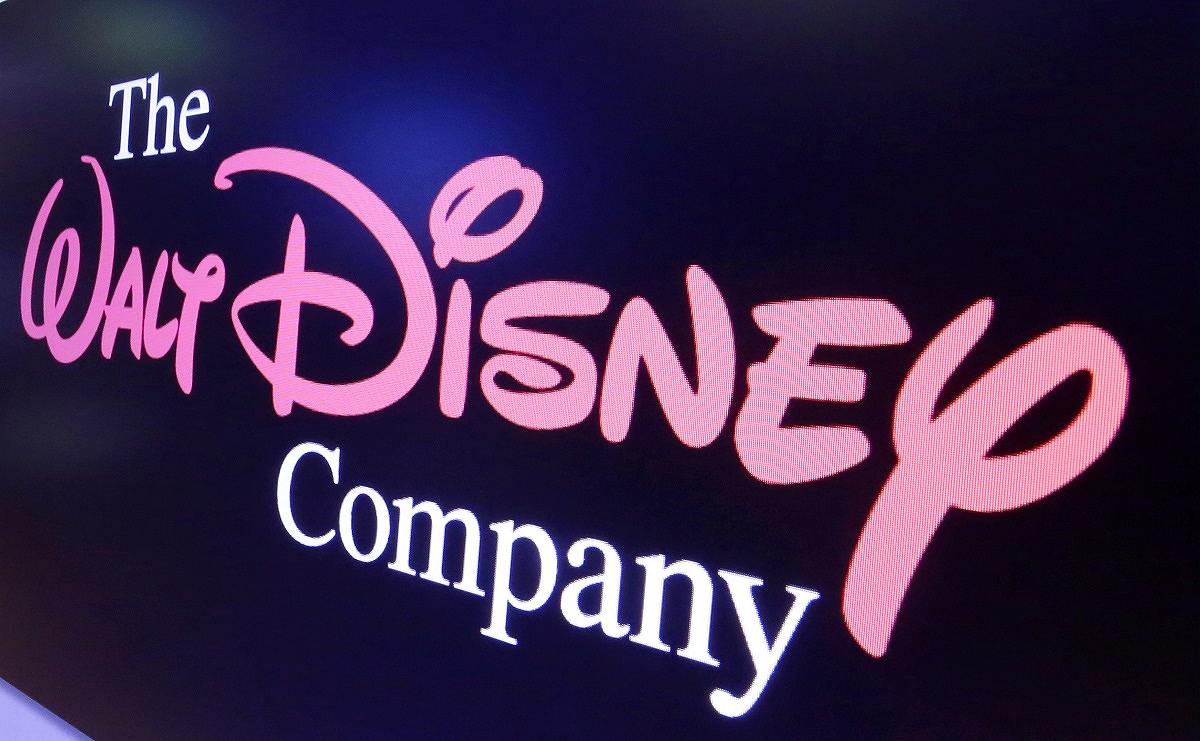
The Walt Disney Co. logo appears on a screen above the floor of the New York Stock Exchange on Aug. 7, 2017.
14:38 JST, February 9, 2024
Disney just infused $1.5 billion to keep the metaverse dream alive.
The corporate announcement avoided using the word metaverse. But the money is going to Epic Games, whose CEO, Tim Sweeney, has been among the earliest to publicly announce his ambitions to help build a metaverse, a persistent online 3D world that acts as either a replacement for or extension of how we use the internet.
Instead, the Walt Disney Co. and Epic Games announced Disney’s $1.5 billion investment into a “new persistent universe” that will live and coexist alongside “Fortnite.” This multiyear project will let people “play, watch, shop and engage with content and characters” from Disney intellectual property such as Star Wars and Marvel Comics.
Put simply, it’s “Disney’s biggest entry ever into the world of games,” Disney CEO Bob Iger said in a statement.
Epic Games is a games publisher and developer founded by Sweeney. It is most famous for creating “Fortnite,” the multiplayer game that became a global phenomenon since its 2017 release. But Sweeney and his company also created Unreal Engine, a suite of tools for building 3D worlds used in hundreds of video games every year, as well as some Disney projects such as Star Wars films and TV shows.
It’s no secret that Sweeney’s ambition for “Fortnite” include using it as the foundation for a still-hypothetical metaverse. Many still question this wisdom for a variety of reasons. For one, Epic Games last year laid off around 900 people, about 16 percent of its workforce, for reasons that include Sweeney’s continued bets on the metaverse, including a “Fortnite” mode for creatives (with revenue-sharing for creators) that hasn’t been as popular as the studio hoped.
Then there’s Meta, the tech giant formerly known as Facebook. Its CEO, Mark Zuckerberg, made a big splash by changing the iconic company name to reflect its ambitions for the metaverse – a concept that became more attractive during the feverish heights of the pandemic lockdowns. Zuckerberg’s metaverse messaging, however, focused on work-at-home aspects, marketing the metaverse as a virtual-reality Microsoft Teams meeting. Mainstream media began to interpret the metaverse as a fancy buzzword for virtual reality, a medium that’s struggled to gain a foothold among consumers for the simple fact that not many people enjoy strapping heavy equipment to their faces.
Since then, Meta has raced forward on AI as people soured on its vision for the metaverse (though Zuckerberg insists the two are connected). Headlines across the media declared the “catastrophic failure of the metaverse.”
And as part of broad layoffs last year, Disney, too, reportedly cut its team dreaming up metaverse strategies.
So why plug money in Epic Games? Disney and Epic Games seem to understand that to build a metaverse, people need to want to be there. It’s entertainment, not work, that can fill arenas. Epic Games proved this out by producing virtual concerts for artists such as Travis Scott and Ariana Grande that saw tens of millions of players log on for the experience.
“Fortnite” isn’t as popular as its peak years from 2018 through 2020. Then last November, it hit a record audience of 44 million players in a single day after relaunching its “classic” map. “Fortnite” can still demonstrate that it is an alluring tool for gathering tens of millions of human beings into a 3D virtual space.
The metaverse isn’t just a fancy buzzword for virtual reality, either. The metaverse concept hinges on standardization of many 3D formats that can interact no matter the platform – somewhat like email. For example, the ideal metaverse means my 3D avatar in “Fortnite,” bejeweled in all my custom virtual assets, could hop into a Meta workspace and start a boardroom presentation. After that, the same 3D avatar could stop by a hypothetical 3D Walmart for shopping. And none of this requires VR, although it can include it.
Unreal Engine, which powers “Fortnite,” is already being used to create Disney characters and worlds. What better way to standardize your company’s way of modeling the 3D future than to partner with the one media company that seems omnipresent in our lives?
The news announcement came with concept artwork for this proposed Disney “universe.” It portrays a neon city lit up with Disney’s media properties: Lucasfilm, Marvel, ESPN. Disney owns ABC News, so don’t be surprised if we eventually see an Unreal Engine-modeled George Stephanopoulos telling us to subscribe to the ABC News YouTube channel.
One could interpret this as dystopian. But the image is a reflection of our own world. Whatever universe is birthed from this, it would be one created by the humans and corporations of today: a persistent universe indeed, and one consistent with ours.
"News Services" POPULAR ARTICLE
-

American Playwright Jeremy O. Harris Arrested in Japan on Alleged Drug Smuggling
-

Japan’s Nikkei Stock Average as JGB Yields, Yen Rise on Rate-Hike Bets
-

Japan’s Nikkei Stock Average Licks Wounds after Selloff Sparked by BOJ Hike Bets (UPDATE 1)
-

Japan’s Nikkei Stock Average Buoyed by Stable Yen; SoftBank’s Slide Caps Gains (UPDATE 1)
-

Japanese Bond Yields Zoom, Stocks Slide as Rate Hike Looms
JN ACCESS RANKING
-

Keidanren Chairman Yoshinobu Tsutsui Visits Kashiwazaki-Kariwa Nuclear Power Plant; Inspects New Emergency Safety System
-

Imports of Rare Earths from China Facing Delays, May Be Caused by Deterioration of Japan-China Relations
-

Tokyo Economic Security Forum to Hold Inaugural Meeting Amid Tense Global Environment
-

University of Tokyo Professor Discusses Japanese Economic Security in Interview Ahead of Forum
-

Japan Pulls out of Vietnam Nuclear Project, Complicating Hanoi’s Power Plans






















